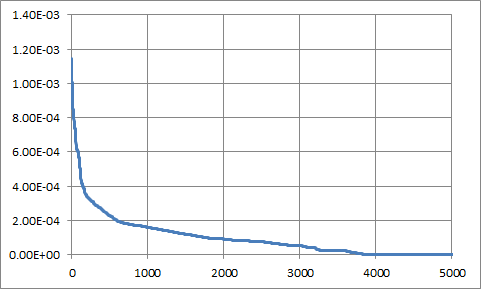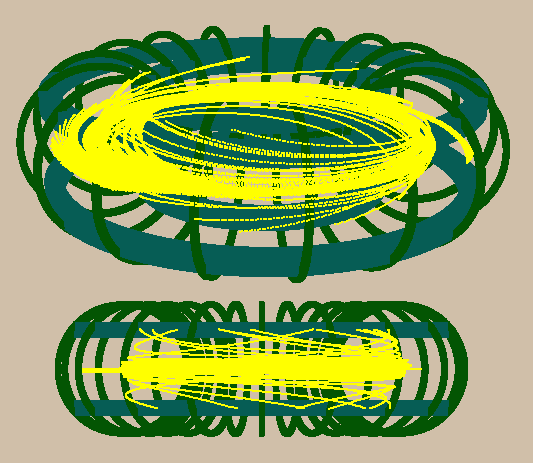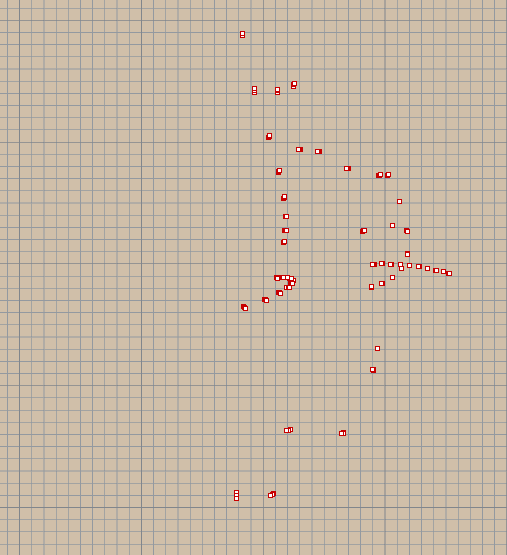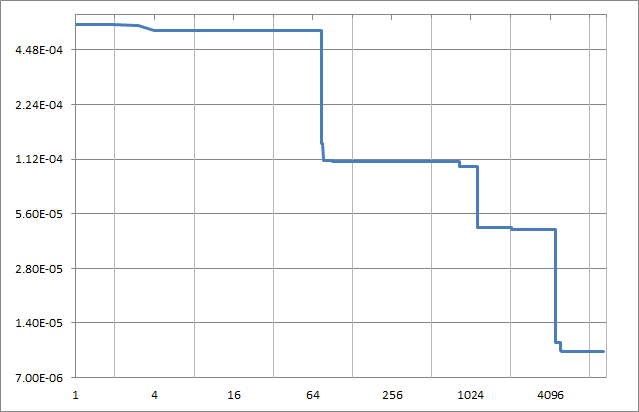A 63 times improvement is reached from an initial configuration
The achievement was done using the step solver to go through 5200 simulations
In the following table appears the result of the simulations, where the X-axis is the simulation number and the Y-axis is the effective reactor area (in square meters):

In the following figure can be seen one of the 5200 simulations with 196 particles flowing inside the tokamak:

The real effective area must be much lower as it has seen in one of the simulations due the real plasma occupancy inside the torus is far to be uniform as can be seen in the following figure:


